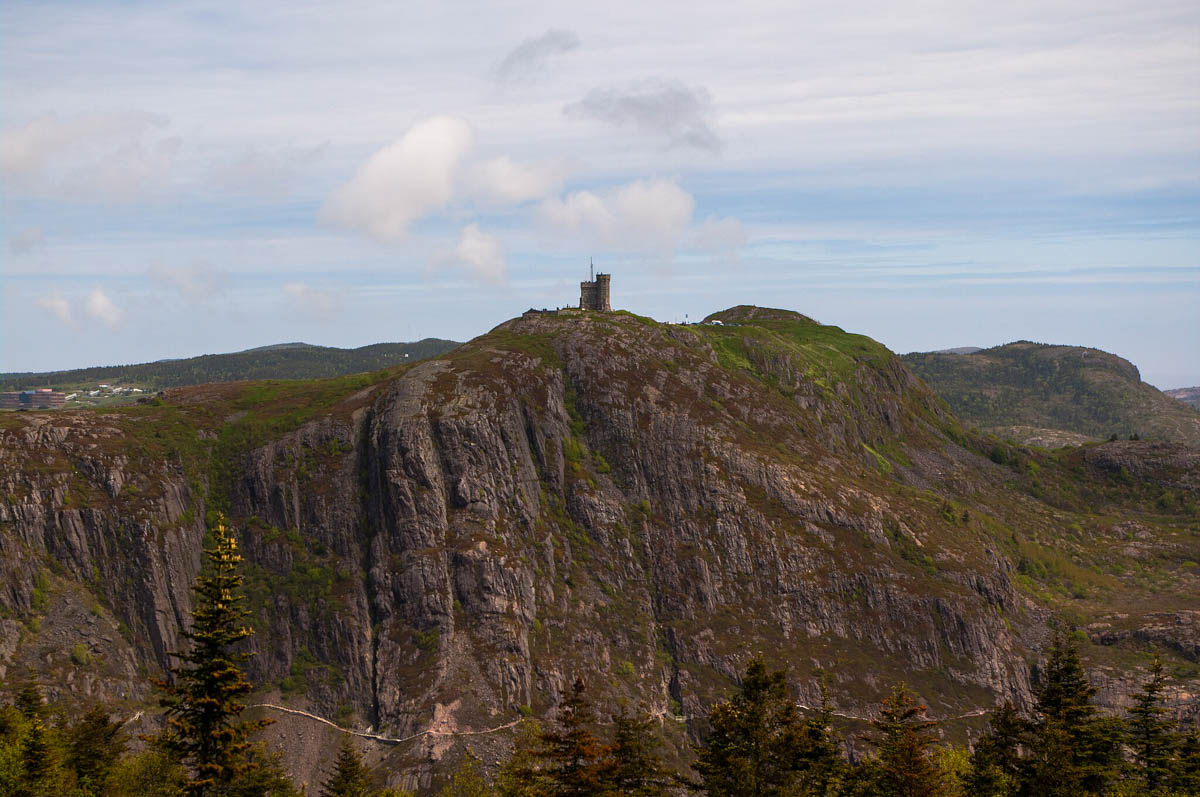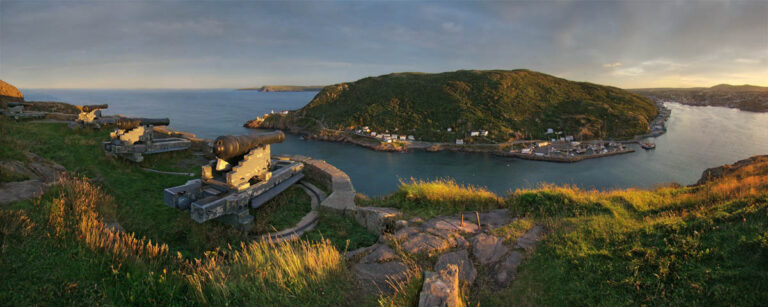Signal Hill is a hill in St. John’s, Newfoundland and Labrador, Canada that provides views over the city and harbour. Cabot Tower and most of Signal Hill are recognized as National Historic Sites. Ladies’ Lookout, the highest point, rises to a height of 167 meters (548 feet).
Fortifications were built in the middle of the 17th century because of their advantageous location overlooking the Narrows, the only port access. Guglielmo Marconi received the first transatlantic radio communication there on December 12, 1901.
The Johnson Geo Centre and Johnson Geo Vista Park are close to the National Historic Site. Memorial University of Newfoundland maintains a campus on the lower slopes, in the historic Battery Hotel, and the hamlet of The Battery is situated on the hillside overlooking the bay.
History:
Known as “The Lookout” at the time, Lieutenant Colonel William Amherst led a British force that captured St. John’s in the Battle of Signal Hill in 1762, which was the last battle of the Seven Years’ War in North America. Amherst gave the hill its new name, “Signal Hill,” after signals were sent from the top of it using its flag mast. There, flag connection between the sea and the land would occur from the seventeenth century until 1960.
When Signal Hill was first being built in the late eighteenth century, it was designated as St. John’s citadel.
Signal Hill was manned during the American Civil War and the Napoleonic Wars in the 19th century. Queen’s Battery Barracks was built during a second building phase in Signal Hill’s history. It has been fully restored to its 1862 appearance.

In 1897, work on Cabot Tower got underway in honour of Queen Victoria’s Diamond Jubilee the same year and the 400th anniversary of John Cabot’s landing in 1497. In 1900, the structure was formally opened. The building’s practical functions included a Marconi wireless station—which has since been relocated to St. John’s International Airport—and flag mast signalling.
Guglielmo Marconi received the first transatlantic wireless message on December 12, 1901, in the now-closed fever and diphtheria hospital, which was devastated by fire. The message was sent from his Poldhu Wireless Station in Cornwall, UK, and was sent in Morse code.
During World War II, the US kept anti-aircraft guns atop the hill. On May 1, 1941, a battery of two 8-inch M1888 railway guns was stationed there; however, it was moved to Red Cliff sometime in 1943. Additionally, Signal Hill was one of three locations ready to receive a battery of two Panama-mounted 155 mm guns.
During the tourist season, the visitor centre is open and includes a cafe, interactive displays, and a video on the military and communications history of the location.
Signal Hill is a National Historic Site.







